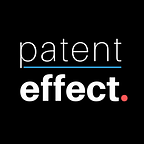Incompatible Dance of Imports and Patent Trends in Turkey — Patent Effect
As Turkey’s foreign trade statistics, We all know that import numbers are higher than export numbers and it is an important fact we are forced into closing this gap. Turkey is continuously in the foreign trade deficit and the current account deficit also triggers this vulnerability.
The total volume of imports of Turkey In 2016 is around 198 billion dollars. When we look at the distributions of import items, it is seen that‚ the largest eggs of the basket belong to the ‘manufacturing industry’. 84% of the total imports (approximately $ 168 billion) have occurred in product groups of the manufacturing industry category.
The details are revealed when we have subdivided the imports occurred in the category of manufacturing industry. It is seen that ‘chemicals and chemical products’, ‘basic metals’, ‘machinery and equipment’, ‘motor vehicles’ and ‘computer-electronic products’ are the most of imported sub-groups of this main category. So this means that we are in a highly foreign-dependent position on providing main products and technologies because we have difficulties in developing medium-high level technologies in these 4 basic areas. It should also be noted that; these product groups with the highest import rates are taking place in the high and medium-high technology categories defined by the OECD, and in these categories; input-type products such as raw materials and semi-finished goods are playing an important role. The total import share of these products is more than 50%. In this case, we need more imports to produce and export more.
In case that Turkey imports the high majority of the products in the category of high and medium-high technologies group, is it possible to consider this data as an indication that Turkey has lack of power to develop technologies in these areas? Both yes and no.
We compared this result graph emerging from the import rates with the official statistical data and figures published by the Turkish Patent and Trademark Office. It has been already known that Turkish industry has wide-range competences in the development of home appliances technologies. Resident patent and utility model applications (981) filed in 2016 also reveal this phenomenon. In 2016, the share of resident patent-utility model applications in the categories of ‘chemical and chemical products‘ and ‘motor vehicles‘ are the top-ranked classes in the total application pool of 2016. However, especially in the categories of pharmaceutical products, medicinal chemicals, chemical products; non-resident patent applications are much higher than resident patent applications in Turkey. We can clearly state that it is very important to review our new technology development strategies in these areas.
WHAT CAN BE DONE?
- It is necessary to identify who develops those technologies, what are the technology development trends and foresight of these classes by determining the classes of the technologies in the subgroups that constitute the highest import items in the manufacturing industry. This data should be used in the determination of priority areas for R&D policy studies.
- The development trends of technology classes for resident patent applications filed in product groups placed in the category of high and medium-high technologies and global patent applications made by other players in the world should be determined and analyzed by approaches of patent data analytics. With the help of this analysis, technology development and commercialization roadmaps in the top priority areas should be created to support decision makers who are responsible for the creation of innovation policies.
- New technology areas and innovative product groups that export rates can be increased with minimum imports can be determined by making detailed analysis with import and patent data. And these areas must be included in high and medium-high technology categories.
- If the patent data of the emerging technologies in the high and medium-high technology categories are analyzed in detail, these insight reports can undertake a leading role in determining the priority areas of R&D and innovation strategies for the decision-making bodies.
- Patent Effect shapes the R&D and commercialization strategies of innovative companies, universities and public bodies by using innovation insight reports prepared using patent data which covers wide-range of countries. Just fill in the form at http://patenteffect.com/ to access the free sample analysis reports that we have prepared for you in different technology areas.
Originally published at blog.patenteffect.com on May 21, 2018.
